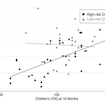
Charles Nelson, Helen Tager-Flusberg and colleagues assessed language development in infants at high risk and low risk of ASD. They reported parental mean length of utterance as a possible difference in the high-risk group.

Charles Nelson, Helen Tager-Flusberg and colleagues assessed language development in infants at high risk and low risk of ASD. They reported parental mean length of utterance as a possible difference in the high-risk group.
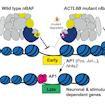
Gerald Crabtree, Joseph Gleeson and colleagues defined a new recessive form of ASD caused by mutations in ACTL6B, part of the BAF complex, which regulates activity-responsive transcription in resting neurons.
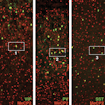
Jessica Cardin and colleagues identified an important and unexpected role for the VIP subclass of interneurons in mediating the functions of MeCP2 in the development of cortical circuits.
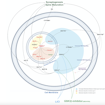
John Rubenstein and colleagues identified WNT signaling as a key mediator of Tbr1-dependent functions in deep-layer cortical neurons, and showed that normalizing WNT signaling rescues particular mutant phenotypes.
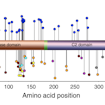
Kurt Haas and colleagues used multiple models and bioassays to assess the functional impact of more than 100 missense and nonsense mutations in PTEN, allowing for high-confidence predictions of pathogenicity.
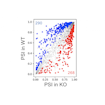
Kimberly Huber, Joel Richter and colleagues showed that FMRP deficiency in mice leads to changes in a key histone modification across the genome, with subsequent effects on alternative splicing of many ASD risk genes.
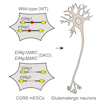
Benjamin Blencowe and colleagues defined the functional roles of microexons in genes encoding translation initiation factors, linking them to altered translation, synaptic plasticity and behavior.

Eric Morrow, Stephen Sheinkopf and colleagues reported the characteristics of the first 1,000 participants in the RI-CART study, a population-based cohort of individuals with autism in Rhode Island.
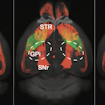
Genevieve Konopka and colleagues reported important roles for Foxp1 in particular subclasses of the spiny projection neurons in the striatum, with downstream effects on striatal-dependent circuits and behaviors.
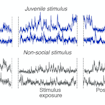
Garret Stuber and colleagues used in vivo calcium imaging to show that a population of oxytocin-positive (OT) neurons in the paraventricular nucleus of the hypothalamus responds preferentially to social stimuli and is necessary for regulating social behavior. Reduced number of OT neurons was associated with social deficits in Shank3b KO mice.